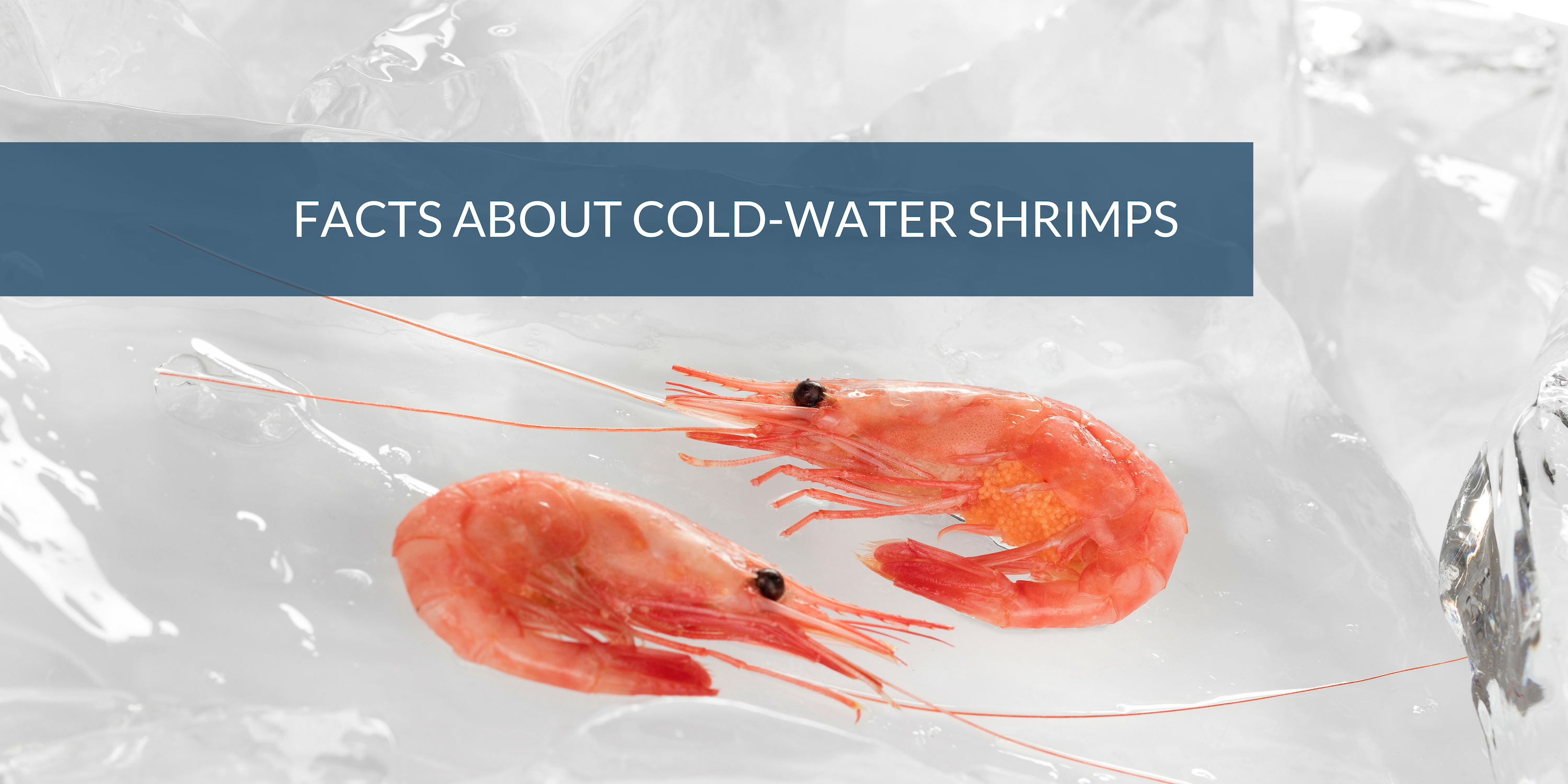The shrimp, that we hand peel, is the North Atlantic cold-water shrimps. This species of shrimps is also called “Pandalus Borealis”, and is known for its sweet flavour and firm and juicy meat. The cold-water shrimp contains lots of protein and have a low content of fat.
IN THE SEA
The cold-water shrimp is caught in the North Atlantic and Arctic Ocean, which makes the shrimp grow slowly and provides plenty of time to develop its delicate taste and texture. The lifespan is around nine years, and the shrimp is typically caught when it is six years old. At that time, the shrimp is between eight and ten centimeters. Farmed hot-water shrimps are contrary full-grown after only six months.
The shrimp has a red, almost transparent shell with red antennas on the head. The head may sometimes appear slightly dark. The reason for the dark color may be many, but the color can be affected by the shrimp’s nourishment, or it may be in the midst of developing eggs for spawning. The dark color does not affect the taste or texture of the shrimp.
The cold-water shrimp lives near the seabed and prefer a water temperature between 0 and 8 degrees. It is mainly derived from plankton, krill and micro-worms. It is born like a male, but becomes a female after three to four years – thus the cold-water shrimp is a hermaphrodite. During the spawning in the spring, the eggs are fertilized and the male carries the eggs. After the outbreak, the shrimp loses its shell and begins to develop a new and larger shell.
ONSHORE
When the shrimps are caught, they are processed on board the trawler. Here, they are sorted, boiled and frozen within a few hours. When the shrimps arrive at our factory in Tanger, Morocco, they are peeled by hand. Afterwards, the hand peeled shrimps are put into brine and packed in sealed pots or vacuum bags.
The cold-water shrimps are an ideal source to protein and have a low content of calories. At the same time, they contain vitamins and minerals such as vitamin B-12, iodine and zinc. The shrimps can be eaten both cold and as a part of a hot dish. If you choose to use the shrimps in a hot dish, we recommend you to add the shrimps to the end. In this way, you avoid to overcook the shrimps, which affects taste and consistence.


